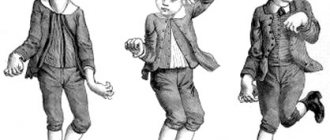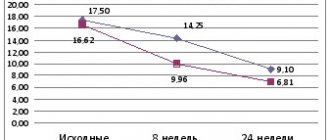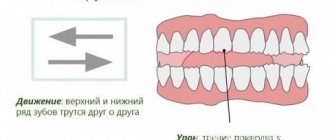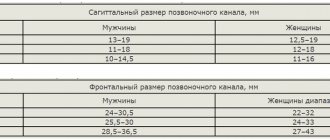General information
Anisocoria is an abnormality of the iris of the eyes, which is characterized by different sizes of the pupils of a person's eyes or their unfriendly reaction.
In this case, most often the functioning of one pupil is normal, and the second is absent, that is, the size of the pupil is constantly fixed, its arc of the pupillary reflex is disturbed - the illumination of the eyes and, as a result, excitation impulses along the fibers of the optic tract on one side do not completely reach the center of the oculomotor nerve. In individuals with lesions of the nervous system, pupils of different sizes are observed in 50-90% of cases, with visceral diseases - no more than 37%, most often in old age.
There is a concept of physiological (essential) anisocoria - the difference in pupil sizes is no more than 0.9 mm. It is observed in approximately 10% of people, without causing disturbances in other reflexes. For example, during migraine , anisocoria is transient.
Causes
In the absence of any damage to the iris or eyeball, anisocoria is usually a consequence of damage to the efferent nerve fibers (parasympathetic innervation) in the oculomotor nerve, which controls movement of the pupil, or the sympathetic nerve fibers coming from the ciliospinal center. Anisocoria is a component of Adie syndrome and Argyll Robertson syndrome[1]. Some drugs and psychoactive substances can affect the pupil, for example, pilocarpine, cocaine, tropicamide, amphetamines (for example, ecstasy), scopolamine. Alkaloids like these, found in plants of the nightshade family, can also cause anisocoria. Anisocoria is a composite symptom; it consists of two opposite actions of the pupil: miosis (constriction of the pupil relative to the norm) and mydriasis (respectively, dilation).
Pathogenesis
Constriction and dilation of the pupils is carried out due to smooth muscle structures - the dilator muscle and the constrictor muscle (sphincter), which are innervated by sympathetic and parasympathetic fibers, respectively. Parasympathetic innervation is provided by additional nuclei of the oculomotor nerve (Edinger-Westphal III pair of cranial nerves), the ciliary ganglion and its branches. Whereas impulses from the sympathetic nervous system are transmitted through the superior cervical (sympathetic trunk) and ciliary ganglion (without switching to synapses).
Innervation of the pupil
Anisocoria syndrome can develop when all these structures, tissues of the spinal cord stem, cervicothoracic node and peripheral branches of the nervous system are damaged, that is, local, central, post- or preganglionic damage.
The symptom of anisocoria is usually based on two opposing abilities of the pupil: its narrowing relative to the norm -
miosis , and, accordingly, its expansion - mydriasis .
Components of the pupillary reflex
In this regard, two pathological conditions of the pupil are distinguished:
- there is no reaction to a decrease in the brightness of the light, that is, the pupil does not dilate at dusk, which indicates a lack of sympathetic innervation, for example, it may be a manifestation of Horner's syndrome ;
- the pupil is large in diameter and does not respond to increased light brightness - most often the pathological condition is provoked by insufficiency of parasympathetic innervation and pathology of the oculomotor nerve.
External pathological factors can cause damage to the sympathetic nerve fibers that come from the ciliospinal center or the oculomotor nerve, or rather its efferent nerve fibers - parasympathetic innervation, which is responsible for the functioning of the muscles of the pupil, and as a result - disrupts it.
Diagnostics
Often you may not even realize that your pupils are different sizes. If this is not due to the presence of pathology, then physiological anisocoria is not reflected in the quality of vision.
However, if anisocoria is caused by eye or nervous system health problems, there may be additional symptoms associated with these problems. These include:
- involuntary drooping of the eyelid (ptosis, partial ptosis);
- difficult or painful eye movement;
- pain in the eyeball at rest;
- headache;
- temperature;
- decreased sweating.
The main task of diagnosis is to identify the pathological prerequisites for the development of anisocoria. If there are alarming symptoms, the doctor will need to find out previous diseases, their duration, origin, possible moment of back injury or head blow, as well as the presence of diseases affecting the nervous system - syphilis, herpes, etc.
See a neurologist
A neurological examination is required. People with nervous system disorders that cause anisocoria often also have ptosis, diplopia, and/or strabismus.
Horner's triad
Anisocoria is also included in the triad of classic Horner's syndrome: drooping of the eyelid (ptosis of 1-2 mm), miosis (constriction of the pupil less than 2 mm, causing anisocoria), facial anhidrosis (impaired sweating around the affected eye). These usually occur due to a brain injury, tumor, or spinal cord injury.
Horner's syndrome (oculosympathetic paresis) can be distinguished from physiological anisocoria by the speed of pupil dilation in dim lighting. Normal pupils (including normal pupils that are slightly unequal in size) dilate within five seconds after the light in the room dims. A pupil suffering from Horner's syndrome usually needs 10 to 20 seconds.
At the ophthalmologist
An examination by an ophthalmologist is carried out to determine the size of the pupils and their reaction to light in bright and dark conditions. In a dark room, the pathological pupil will be smaller. However, this will also be characteristic of physiological anisocoria and Horner's syndrome. Further differential diagnosis is carried out by instillation of mydriatics (medicines that dilate the pupil) into the eye. With pathology, a smaller pupil will still remain constricted and will not respond to the action of the medicine.
When the difference in pupil size is greater in a lit room, the larger pupil is considered abnormal. In this case, additional difficulty in eye movement may be detected, which indicates damage to the third pair of cranial nerves. If normal eye movement is maintained, a test is performed with miotic drugs, which should cause pupil constriction. If this does not happen, then the presence of tonic Adi syndrome is assumed; if there is no reaction to the drug, then damage to the iris can be suspected.
Accommodation and the amount of movement of the eyeballs are also determined. A more pronounced reaction of the pupil under accommodative load than under the influence of changes in illumination is considered abnormal.
The pathological structure of the eye is revealed by biomicroscopy.
You can determine the presence of constant anisocoria by a series of photographs of different ages, where the pupils and their size are visible.
Classification
Depending on the causes and characteristics of the manifestations of impaired functioning of the pupil, anisocoria occurs:
- physiological;
- pharmacological mydriasis (dilation) of one of the pupils;
- anisocoria due to viral or bacterial infection;
- anisocoria caused by damage to the third pair of cranial nerves;
- Argyll Robertson syndrome - leads to the disappearance of the pupil's reaction to light rays, characteristic of neurosyphilis and progressive paralysis ;
- Horner's syndrome - anisocoria in the form of unilateral constriction of the pupil, develops as a result of a violation of the sympathetic innervation of the eye, manifested by moderate ptosis, miosis, facial anhidrosis and spasm of accommodation;
- Adi syndrome - characterized by an increase in the size of the pupils and the presence of tonic reactions to light, but slow and prolonged, usually caused by a lack of parasympathetic innervation.
Argyll Robertson syndrome
Argyll Robertson's pupil is also simply called the "prostitute's" pupil, since most often the pathology is caused by neurosyphilis, in some cases - diabetic neuropathy . Appears as bilaterally small pupils that may decrease in size with accommodation , but do not “react” to bright light. Thus, the ciliary ganglion functions and provides miotic reactions, but which tissues of the nervous system are affected and what is the reason for the lack of a direct friendly reaction to light has not yet been clarified due to the lack of clinical cases to collect research data.
Eyes of a person with Argyll Robertson syndrome
Horner's syndrome
It is a manifestation of damage to the sympathetic component of the nervous system and is characterized by a number of symptoms such as:
- drooping upper eyelid due to insufficient sympathetic innervation ( ptosis );
- constricted pupil as a result of miosis;
- weak reaction to light caused by pathology of the sphincter of the pupil;
- sunken eyes ( enophthalmos );
- impaired sweating, dilated conjunctival vessels and hyperemia of the facial skin of the affected side;
- different eye colors in children due to the presence of obstacles to melanin pigmentation.
Features of the development of Horner's syndrome
Horner's syndrome and disruption of the sympathetic chain can be caused by tumor processes, inflammation, aneurysms , injuries and specific diseases such as syringomyelia , multiple sclerosis , Dejerine-Klumpke palsy , neurofibromatosis , mediastinitis , cluster headache , etc.
Adi's pupil
In contrast to Horner's pupil on the affected side, Adi-Holmes' pupil is dilated - mydriasis is observed. In this case, the shape of the pupil is normal, and the reaction to light is somewhat weakened, slowed down or completely absent. The pathology is accompanied by decreased visual acuity and weakened tendon reflexes, and patients may develop photophobia , farsightedness and difficulty reading.
The development of this syndrome is usually associated with damage to the postganglionic fibers of the parasympathetic innervation of the eyes by infections of a viral or bacterial nature, causing inflammation in the ciliary ganglion and disrupting the functioning of the autonomic nervous system.
Treatment
Congenital anisocoria cannot be treated and does not require treatment. The body is either initially adapted to it, or it goes away on its own in children with age.
Other types of anisocoria require mandatory diagnosis by a doctor to exclude deadly causes. Diagnostic methods include:
- Reflex check of pupil reactions and check with an ophthalmologist.
- Analysis of venous and capillary blood.
- Pressure monitoring.
- Ultrasound.
- Tomographic studies.
- X-ray of the skull and cervical bones.
- Angiography is the study of blood vessels to determine the quality of their conductivity.
- Cerebrospinal fluid analysis.
Anisocoria syndrome is not an independent disease, but only a symptom of other abnormalities, so it is not the cause that is treated. Treatment methods depend on the specific disease that provoked its appearance.
Causes of anisocoria
There are many reasons why pupils are different sizes. The anomaly can be either congenital - detected immediately after birth or several months later, or acquired - disruption of the functioning of the sphincter and dilator of the pupil, oculomotor and other nerves, can be caused by the influence of external pathological factors, iatrogenicity and mechanical damage.
The causes of anisocoria in infants are various congenital defects caused by genetic diseases and disorders of the embryonic development of the neuromuscular system of the eyes, for example, Horner's syndrome . The first sign of pupillary muscle dysfunction in children is usually strabismus .
Why do adults have different pupil sizes?
The causes of the symptom of different pupil sizes in an adult can be of different nature:
- pressure and injury to the nerve pathways or visual centers as a result of tumor growth, hemorrhages and traumatic hematomas (epidural or subdural);
- exposure to a bacterial or viral infection can cause abnormal dilation of one of the pupils, as in Holmes-Adie syndrome;
- damage to small blood vessels in diabetes as a result of diabetic neuropathy;
- blunt eye injuries damaging the pupillary muscles;
- epidemic encephalitis , multiple sclerosis , Roque's symptom and various diseases of the abdominal organs that disrupt reflex mechanisms;
- neuralgia of the facial nerve;
- neurosyphilis (causes Argyll Robertson pupil syndrome);
- side effects of medicinal and psychoactive substances - Pilocarpine , cocaine , Tropicamide , amphetamines (including “ ecstasy ”), Scopolamine , nightshade alkaloids
Local diseases of the iris, for example, inflammation - iritis , ischemia in glaucoma can also cause disruption of the pupillary apparatus. Eye surgery can have negative consequences in the form of adhesions and cause changes in the shape and displacement of the pupil. In addition, anisocoria may occur with bilateral cataracts at various stages of development: if the cataract is immature, then the pupil is wider and the reaction to light will be faster.
What is the reason for the violation: reasons
Asymmetry can appear during a stroke or after a myocardial infarction. The pathology can be congenital and manifests itself in childhood. Also, the deviation may be acquired in nature, in which disruption of the palpebral fissures and pupils occurs against the background of injury or another disease. Sometimes a diagnosis of “anisocoria” is made for cervical osteochondrosis. A difference in the size of the pupils can occur with ptosis (prolapse of the organ), as well as against the background of such disorders:
- iris disease;
- neoplasms;
- hemorrhages of varying degrees;
- injury to the eyeball, resulting in the formation of a hematoma;
- impaired blood flow in the brain;
- deviations from the nervous system;
- heredity;
- Argyll Robertson syndrome, in which there is reflex immobility of the pupils to light;
- Eydi syndrome, accompanied by a weakened pupillary response to stimuli;
- taking certain medications;
- drug addiction;
- increased intracranial pressure;
- symptoms of meningitis;
- frequent migraines;
- infectious diseases, which include complicated syphilis and epidemic encephalitis.
Symptoms
The most common cosmetic defect of anisocoria is unilateral mydriasis (dilation) of one of the pupils, caused by tissue damage during the development of general diseases, or unilateral miosis (narrowing), which is characteristic of longer chronic courses of the disease and breakdown of protective forces and endocrine pathologies. A special case is anisocoria with asymmetrical mydriasis in epileptoid conditions.
In addition to the outwardly noticeable inequality in pupil size, pathological changes can lead to such manifestations as:
- decrease in all pupillary reactions;
- limited mobility of the eyeball;
- strabismus;
- double vision;
- ptosis;
- disturbances of accommodation and convergence;
- pain syndrome.
Attention! If, in addition to the difference in the pupils, acute headaches, mental disorders, and confusion occur, then this may be a sign of a severe pathological process in the structures of the brain. In this case, the patient may at any time require emergency medical care, and in some cases, possibly surgical intervention.
How to recognize the symptoms?
Anisocoria in children and adults rarely goes unnoticed, since during its development the patient has different pupil sizes. Their size may differ by 1 mm, and sometimes the difference reaches 0.5 mm or more. If there is a violation, a sail symptom is sometimes noted, which is characterized by swelling of the cheek on the side of the brain lesion. This phenomenon is observed if anisocoria is provoked by a hemorrhagic stroke. The pathology of the pupils does not go away on its own, and over time the patient’s condition can only worsen. Anisocoria can be recognized by the following symptoms:
Such people quickly get tired of their eyes from working on a PC.
- impaired sensitivity or its complete absence;
- problems with visual function, in which the eye may have difficulty recognizing moving objects;
- signs of strabismus;
- feeling of splitting;
- fatigue and pain in the eyeball, especially when working at the computer for a short time;
- painful attacks in the head of varying intensity and character.
Tests and diagnostics
The first and main task of the ophthalmologist is to identify the affected pupil and the characteristics of its dysfunction. It can be local or provoked by impaired innervation. For diagnosis, screening iridodiagnosis, pupillography, biomicroscopic examination, angiography, ultrasound, MRI or CT can be used.
Tests such as:
- a test using drops of cocaine or apraclonidine can detect mydriasis in Horner's syndrome;
- test with oxamphetamine or paredrin to determine the cause of miosis;
- test to determine the delay in pupil size increase.
Reasons for development
Based on their origin, the following forms of pathology are distinguished:
- Congenital and acquired.
- Ocular and extraocular.
The congenital form of narrowing or dilation of the pupil is often associated with an abnormal structure of the muscular or nervous apparatus of the eye. Often accompanied by strabismus or limited mobility of the eyeball. It is diagnosed in an infant from the first days of birth, but often goes away by 5-7 years.
Congenital anisocoria can be physiological, i.e., not directly indicating a pathology of the eye structure. In this case, the difference between the sizes of the pupils does not exceed 1 mm, does not affect visual acuity, and during diagnosis no significant damage is detected. According to statistics, a congenital physiological manifestation occurs in every fifth inhabitant of the Earth.
The acquired form develops for a number of reasons:
- Neurological pathologies affecting the conductivity of the visual nerve pathways.
- Ophthalmological diseases.
- Injuries.
- Exposure to various substances.
Neurological pathologies
Of the neurological diseases that lead to different reactions of the pupils to light, meningitis and tick-borne encephalitis are most often diagnosed. In more rare cases, meningoencephalitis or neurosyphilis (extremely rare). The occurrence of a large difference in the diameter of the pupils is associated with damage to the muscular and nervous apparatus of the eye, deterioration of innervation and a decrease in the activity of areas of the brain responsible for the visual organs.
Ophthalmic diseases
Among ophthalmological diseases, the most common cause of the development of anomalies and inconsistency of pupil reactions are infectious or non-infectious iritis and anterior uveitis (iridocyclitis) - inflammation of the iris or choroid. This leads to disruption of the normal functioning of the motor muscles of the eye, their spasm and pathological contraction and dilation of the pupil.
Glaucoma often leads to miosis of one of the pupils, because when the hole contracts, the outflow of fluid from the anterior chamber of the eye improves, which leads to a decrease in intraocular pressure. It is also worth noting the influence of tumors and neoplasms in the area of the visual center, directly on the conducting fibers or in the eye itself. The tumor can compress nerve fibers, leading to:
- Miosis, if sympathetic innervation is insufficient.
- Mydriasis, if parasympathetic innervation is insufficient.
Injuries
Trauma is one of the most common causes of anisocoria. Both damage to the eye itself and traumatic brain injury can lead to a mismatch in the reaction of the pupils. When the eye is injured, primary infectious (traumatic) uveitis or iritis may develop. This will increase intraocular pressure, which will cause the pupil in the affected eye to constrict.
With a traumatic brain injury, the nervous system of the eye or the visual centers located in the cerebral cortex can be damaged. In the first case, there is concomitant esotropia (inward squint) or exotropia (outward squint). When the visual analyzer is damaged, a pronounced dilation of the pupil is observed in the cerebral cortex on the affected side. The same thing can happen with a stroke.
Exposure to substances
Some medicinal substances, including those that are no longer used for medical purposes in the modern world, can cause uneven dilation or constriction of the pupils due to psychotropic effects. The following have a mydriatic effect:
- scopolamine;
- atropine;
- homatropine;
- tropicamide
Other substances that are often used in ophthalmological practice to constrict the pupils after studies and the use of mydriatic drugs have a pronounced pupil-constricting effect:
- pilocarpine;
- physostigmine.
Of the narcotic drugs, cocaine and amphetamine have the greatest activity on unilateral constriction and dilation of the pupils.
Diet for anisocoria
Diet for the nervous system
- Efficacy: therapeutic effect after 2 months
- Timing: constantly
- Cost of food: 1700-1800 rubles per week
The causes of anisocoria can lie not only in local disorders and trauma to the iris of the eyes, but also in circulatory disorders of the brain, and in trophic problems of the structures of the nervous system, therefore it is very important to provide comfortable conditions for the life of the whole organism and the functioning of the autonomic nervous system in particular. Adequate amounts of activity and sleep are necessary for a person’s psycho-emotional and physical health, as well as such aspects as:
- daily intake of BJU (proteins, fats, carbohydrates) in accordance with the level of physical activity, weight, age and gender;
- enriching the diet with vitamins and microelements by increasing the variety of menus with vegetables, fruits, berries, lactic acid and seafood, etc.;
- maintaining water-salt balance;
- rejection of bad habits.
Etiology of anisocoria
The causes of anisocoria may be problems in the operation of the device or malfunctions in the functioning of the nervous system. Most often, doctors name the following reasons for this condition:
- systematic use of narcotic drugs;
- infections: meningoencephalitis, neurosyphilis, meningitis;
- diseases that affect the brain, nerve and visual pathways;
- eye diseases of various origins: glaucoma, iritis, iridocyclitis;
- the occurrence of hematomas or malignant tumors in the brain;
- injury to the skull or spine leads not only to a deterioration in the functioning of the nervous system of the eye, but also inhibits the activity of important visual brain centers, causing in some cases strabismus;
- injuries of the eyeball with damage to the ligamentous apparatus of the eye or the iris.
As for the last item on the list, with such traumatic injuries, structural changes in the eyeball are not visible, but the pressure inside the eye greatly increases, paralysis of the muscle fibers of the iris occurs, and this already leads to mismatch.
When it is known what diseases anisocoria occurs in, it can be divided into several varieties. When making a diagnosis, it is important to accurately determine whether one or both eyes have problems associated with the inability of the pupil to change its size. Most often, pathology is observed only in one eye, but there are cases of bilateral anisocoria. Mismatch of varying degrees occurs in the pupils of both eyes. This is a very rare phenomenon, occurring in 1 case out of 100.
Anisocoria can be congenital or acquired. In the first case, doctors discover this phenomenon in the maternity hospital. The newborn exhibits some abnormalities in the functioning of the muscular apparatus of the iris. Anisocoria is often accompanied by insufficient development of the nervous system of the eye, and this provokes the occurrence of strabismus.
A difference in pupil size of 0.5-1 mm with the absence of other symptoms is called physiological anisocoria. Most likely, we are talking about congenital features of the iris of one eye. If you discover such an inconsistency in yourself, you should not panic, because this phenomenon cannot be treated and is observed in 5 of all healthy people.
Doctors distinguish between ocular and non-ocular anisocoria. It all depends on the reasons for the violation. Problems may be in the functioning of the eye apparatus itself or concentrated outside its departments.
What is anisocoria
Asymmetry of the pupils, in which one is of normal size or narrowed, and the other is dilated, is called anisocoria. This is not a disease, but a symptom that is considered a pathology when the diameter difference is 1.5-2 mm or more. Abnormal dilation or constriction of the pupil may be accompanied by disorientation, distortion of objects, and visual fatigue.
One pupil works as before: it reacts to the slightest changes in the light flux. In the second, the reaction to light is impaired or completely absent. The mechanism of development of the pathology: if the muscle of the iris, which ensures the constriction of the pupil, is damaged, the patient’s reaction to a bright light flux disappears. This disorder progresses after injury to the eyeball, against the background of ophthalmological diseases.
Why is pupil asymmetry dangerous?
Physiological anisocoria is not a pathology, does not reduce visual acuity, and goes away on its own. In a pathological process, a difference in diameters of more than 1-2 mm can lead to the following complications:
- ocular migraine (headaches with visual disturbances);
- decreased visual acuity;
- spasm of accommodation (spastic contractions of the ciliary muscle);
- secondary uveitis (inflammation of the uvea);
- amblyopia (lazy eye syndrome that cannot be corrected).
What to do if the pupils are different sizes
If one pupil is dilated, treatment depends on the etiology of the pathological process:
- Hypoplasia or muscle aplasia. In childhood, they pass on their own; it is possible to prescribe a course of physiotherapeutic procedures.
- Eye diseases. The method of neurostimulation is implemented, and hormonal therapy is prescribed as symptomatic treatment.
- Iritis. Anisocoria is successfully treated with nonsteroidal anti-inflammatory drugs to relieve symptoms and antibiotics to destroy pathogenic flora.
- Adie's syndrome. Instillation of M-cholinomimetics to relieve pain and inflammation.
- Syphilis. Long-term antibiotic therapy of the underlying disease, symptomatic treatment of pupil asymmetry.
- Traumatic brain injuries, head damage. Conservative or surgical treatment to eliminate provoking factors.
- Malignant tumors, cerebral hemorrhage. Surgery is indicated to treat the underlying disease.












